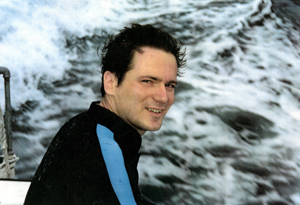
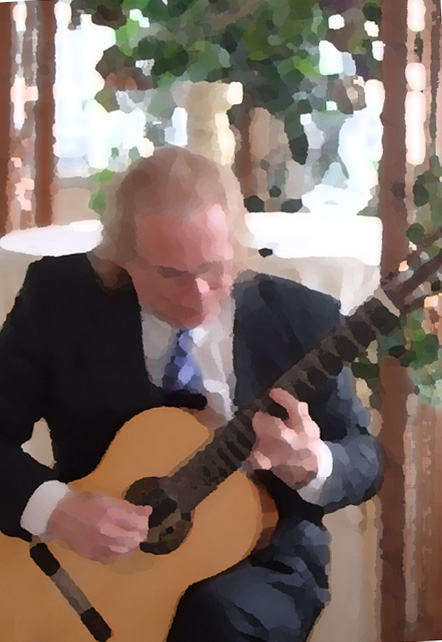
Harry Pellegrin received his training at The Mannes College of Music in New York City, where his studies included theory, composition, ear-training, ensemble performance, keyboard and voice. Studies on his major instrument were conducted with the late Albert Valdes-Blain, renowned classical guitarist and gifted educator, and one-time pupil of the Master -- Andrés Segovia. Harry was also selected by a panel of professors at Mannes to participate in a year-long series of master classes with recording artist and concert guitarist Eliot Fisk.
He is trained in
classical guitar and lute and has performed for
many years on these instruments. He also has
played extensively in popular music in both live
performance and in the recording
 studio.
studio.
At his guitar studio in New York City, Harry taught guitar and lute from 1980 until 1993. He is once again offering private and group instruction in Scotia, New York. Harry stresses a well-rounded musical education with an emphasis on the player's adaptability to any artistic situation through a deep knowledge of the mechanics and theory of music.
Openings are limited.
êêêêê
 |
| Harry George Pellegrin |
By
mark holley
on 10/27/11
êêêêê
for Private Classical Guitar Lessons with Professional Recitalist
My daughter has started lessons with Harry this fall. There is a marked improvement in her practicing and playing. She has structured lessons and she is more confident when playing. We are very pleased with Harry and she loves going to lessons. We highly recommend Harry for students who are serious about learning guitar.
By
Derek Weinberg
on 10/27/11
êêêêê
for Private Classical Guitar Lessons with Professional Recitalist
Harry is the best teacher that any beginner guitarist could find. Studying guitar with Harry extends far past just learning the instrument. With Harry you learn about the guitar's history, music as a whole, and about what it truly means to express one's emotion through the art form. For those who are looking for an unforgettable learning experience, studying with Harry is definitely the way to go.
By
Eric Marczak
on 10/27/11êêêêê
for Private Classical Guitar Lessons with Professional Recitalist
I am a local luthier who has had the great pleasure of getting to know Mr. Pellegrin. As a friend, as "his" luthier (not everyone has one), as a recording engineer, and as a student. As a friend Harry is a gentleman, and scholar. Generous and kind. As his luthier, we have worked together creating two of his guitars, "Myrtle" and "Dark horse". From selecting the wood to dialing in the kind of voice the instrument would have. As a recording engineer, to have Harry in my studio, to hear his magic unfold before me, ah, sheer indulgence on my part. As a student I have learned so much from just watching him play. When he teaches he doesn't waste a word. Every tip, every correction in technique is designed to not only teach music, but to help one gain confidence and self worth. Can't put a price on that. Eric Marczak Knox, NY
By
Bernadette Wehr
on 10/27/11
êêêêê
for Private Classical Guitar Lessons with Professional Recitalist
My nine year old daughter is one of Harry's current students. Not only is she excelling under his tutelage, but she loves her lessons. Harry provides the perfect mixture of fun(ny) and work. He is able to meet her at her level and pushes her to get better. He discusses music theory and therefore provides a rich musical experience. Harry also takes time to help me understand what my daughter should be working on at home. In addition, Harry is always available to answer questions and provide additional support. Harry is an amazing teacher - I recommend him highly!
By
Melanie Watman
on 10/27/11
êêêêê
for Private Classical Guitar Lessons with Professional Recitalist
I am currently a student with Harry and he is all I could've hoped for in a guitar teacher. I started lessons with him 2 years ago with absolutely no experience in the instrument, but always wanted to learn. He has always encouraged me to do my best, never pushes me in a direction I'm uncomfortable with, and is extremely encouraging and respectful of what you can bring to the table musically. I can tell what a great teacher Harry is every time I pick up the guitar. I went from barely being able to hold the instrument, to being able to actually play some music out of the instrument. I would absolutely recommend him to anyone interested in classical guitar lessons or in need of a performer. He has so much knowledge and respect for the instrument that he clearly loves sharing with others.
By
Rocky Rockwell
on 10/26/11
êêêêê
for Private Classical Guitar Lessons with Professional Recitalist
When I went to take classical guitar lessons with Mr. Pellegrin, I was only doing classical guitar as an instrument to complement my music business major that I would begin at school the next year. The very first lesson, I remember he asked me the question, "What do YOU like to play?" I really didn't know, as I didn't know much about classical guitar repertoire at all. That summer, Harry opened up a whole new world of music to me. I learned about all of the great guitar composers, Sor, Carcassi, and Barrios, to name a few. The way Harry played these pieces for me had so much emotion and power in the performance, and it made me think, "wow, this is the guy giving me lessons!" I learned so much about technique, economy of motion, and most importantly, emotion while playing guitar from Harry. Harry is also very good at articulating why he would recommend a chord be played a certain way, or why a certain phrase soft be loud or soft, or bright or warm. He is a patient teacher, and is slow to anger, unlike many other teachers that I've had. I'm so glad that my mother found his website online and told me about his guitar instruction! Another great thing about Harry's lessons is the price. Most of the most prestigious guitar teachers charge astronomical rates for lessons (the teacher I take lessons from at college charges $60/hour for his private lessons outside of school). Harry charges $40/hour, for which you will learn just as much, if not more than you would from any other teacher. And lastly, one of the greatest things about taking lessons with Harry is that he's now become a personal friend. He and I go to a guitar soirée in Albany once a month, and if something happens and the soirée gets cancelled, he and his wife, Elaine, still invite me over for dinner that night. He truly is one of the greatest individuals I've ever met.
By
Scott Andrus
on 10/26/11
êêêêê
for Private Classical Guitar Lessons with Professional Recitalist
Mr. Pellegrin is an extremely patient, knowledgeable and competent teacher as well as being a concert-level classical guitarist. His openness, patience, humility, calm demeanor and make learning the classical guitar an adventure rather than drudgery. His passion for the art comes alive and cannot help but inspire the student. A great teacher.
By
Bill Hemmings
on 10/26/11
êêêêê
for Private Classical Guitar Lessons with Professional Recitalist
Harry is a superb guitar instructor. He explains and demonstrates in detail each facet of guitar instruction. He listens to students' requests and tailors the instruction to accommodate those requests where feasible. His musical education allows him to explain the theory and "whys" of music to the student rather than just the "hows". Above all, he teaches the student how to express feelings through music. As a bonus, he is an excellent recitalist and provides the student with examples of the techniques which may then be emulated by the student.
By
Barry Lazarus
on 10/26/11
êêêêê
for Private Classical Guitar Lessons with Professional Recitalist
I am a former student of Harry George Pellegrin. I took classical guitar lessons with him for many years. Harry first gave me a solid foundation in guitar playing, and then guided me to be the best musician that I could possibly be. He is warm, patient, and truly cares about the success of his students. I eventually became a music teacher myself, so I can really appreciate the practicality of his methodology. If you are looking to learn guitar in the proper way, then Harry is the teacher you want. The rating scale should go up to ten stars. Five stars does not do him justice.
SCHENECTADY GAZETTE ARTICLE FEATURING ERIC MARCZAK!
Early Release Copies are now available!
Price: $8.95 plus tax and shipping
http://www.lulu.com/content/compact-disc/old-and-new/8192564
Old and New
A CD collection of classical guitar favorites plus five selections from 'Suite for Guitar' by Harry George Pellegrin.
"I picked the selections for this CD from the large number of pieces that I have continued to enjoy over the many years that make up a lifetime, including both student pieces as well as recital-fare. The intent of this album is not to try to dazzle, but to evoke memories."
SAMPLES:
Asturias/Leyenda
Isaac Albéniz
Etude Opus 6 Number 8
Fernando Sor
Etude
Opus 35 Number 13 Fernando
Sor
Etude Opus 35 Number 22
Fernando
Sor
Etude
Opus 35 Number 17 Fernando Sor
Lágrima
Francisco Tárrega
Adelita
Francisco Tárrega
Mazurka in
C Francisco Tárrega
Mazurka in
G Francisco Tárrega
Introduction and Variations on a Theme by Mozart
Fernando Sor
Etude
Opus 60 Number 3 Matteo Carcassi
Etude
Opus 60 Number 7 Matteo Carcassi
Etude
Opus 60 Number 16 Matteo Carcassi
Vals
Brevis One (Waltz for Agustin) For Georgio Testani
Harry George Pellegrin
Vals
Brevis Two (Dark Horse Waltz) Harry
George Pellegrin
Vals
Brevis Three (The Last Kiss) For Veronica M. Pellegrin
Harry George Pellegrin
Vals
Brevis Four (Summer Afternoon, Bronx, 1962, For Coco)
Harry George Pellegrin
Snowfall 12.21.2008 Harry George
Pellegrin
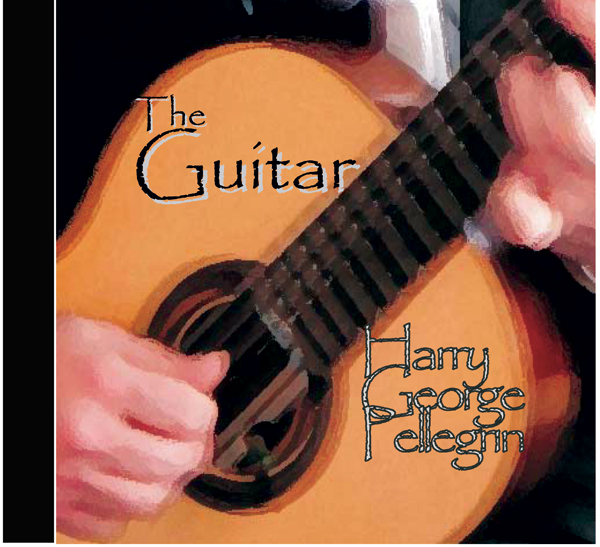 The Guitar
The Guitar
We have made available
"Improving Left Hand Accuracy..." an
article Mr. Pellegrin wrote for Soundboard
The Journal of the Guitar Foundation of America. Please click this hyperlink to read the
article. Written in 1981, this article has been
used by a large number of guitar teachers to free
the left hands of beginning and intermediate
level pupils.
New Feature -- Exercise of the Week
Each week a new exercise designed to improve the guitarist's left hand dexterity and stamina will be added to this site. Follow this link!
My Concept of a
Complete Musical Education
It is my belief that mastery of the instrument
and a thorough understanding of music is
essential regardless of the style or genre of
music one wishes to perform. Yes, I will teach
beginners some simple chords so that they can
strum a song or two--this affords the new student
a sense of accomplishment. However, this is not
the main thrust or goal of my teaching method.
Whether the student wishes to play grunge, blues,
pop, rock , jazz, classical -- or any any other
style you care to mention--technical proficiency
is what sets the true musician apart from those
who simply have a guitar tucked away in his or
her closet.
I insist the student learns to read standard notation and be able to sight-read effectively on the instrument.
I insist on a dedicated practice schedule.
I
insist all students develope their musical ear so
that intervals and chords can be quickly
recognized--an invaluable aid when learning a
piece of music in an impromptu setting. Those
students who wish to pursue mastery of the
classical guitar are trained in music theory and
basic keyboard technique. For some great free
sheet music, click the following link:
Harry Pellegrin
Harry George Pellegrin is an author of mystery novels, a musician and recording artist. Primarily a guitarist, Harry's latest recordings are keyboard-driven and most easily classified as New Age, though we don't like to consider the music in a 'genre box.' Harry G. Pellegrin's first published novel, LOW END, is a murder mystery set in South Yonkers and New York City in the late 1980's. The characters, all derived from friends and acquaintances, try to investigate the death of one of their own -- not so much to solve a crime, but to keep from sharing a similar fate. LOW END has been met with great critical acclaim. The sequel, DEEP END, is being shopped by a well-known literary agent at the time of this writing.
This page is designed for a number of reasons. We'll be honest, a primary goal is to expose a larger audience to Harry's music and writing. Another goal of the webmaster is to create a repository for the knowledge that years of experience in the performing arts industry has given Harry. Creating a chronicle of life in the Bronx in the 1960's and 1970's is another goal we hope to accomplish.
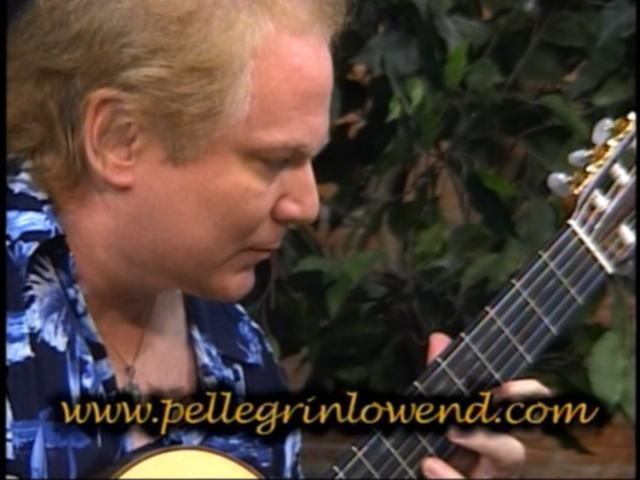
You've heard Harry's compositions on the
Al Roney Radio Show on 810 WGY AM.
Buy the album!
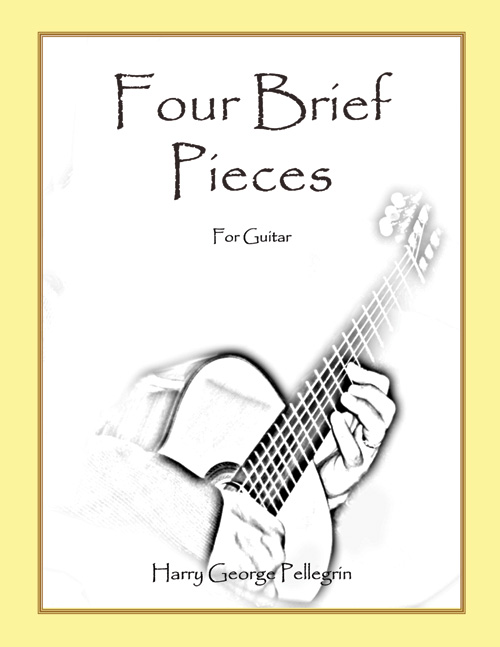
NEW TITLE! CLICK HERE FOR SHEET MUSIC!
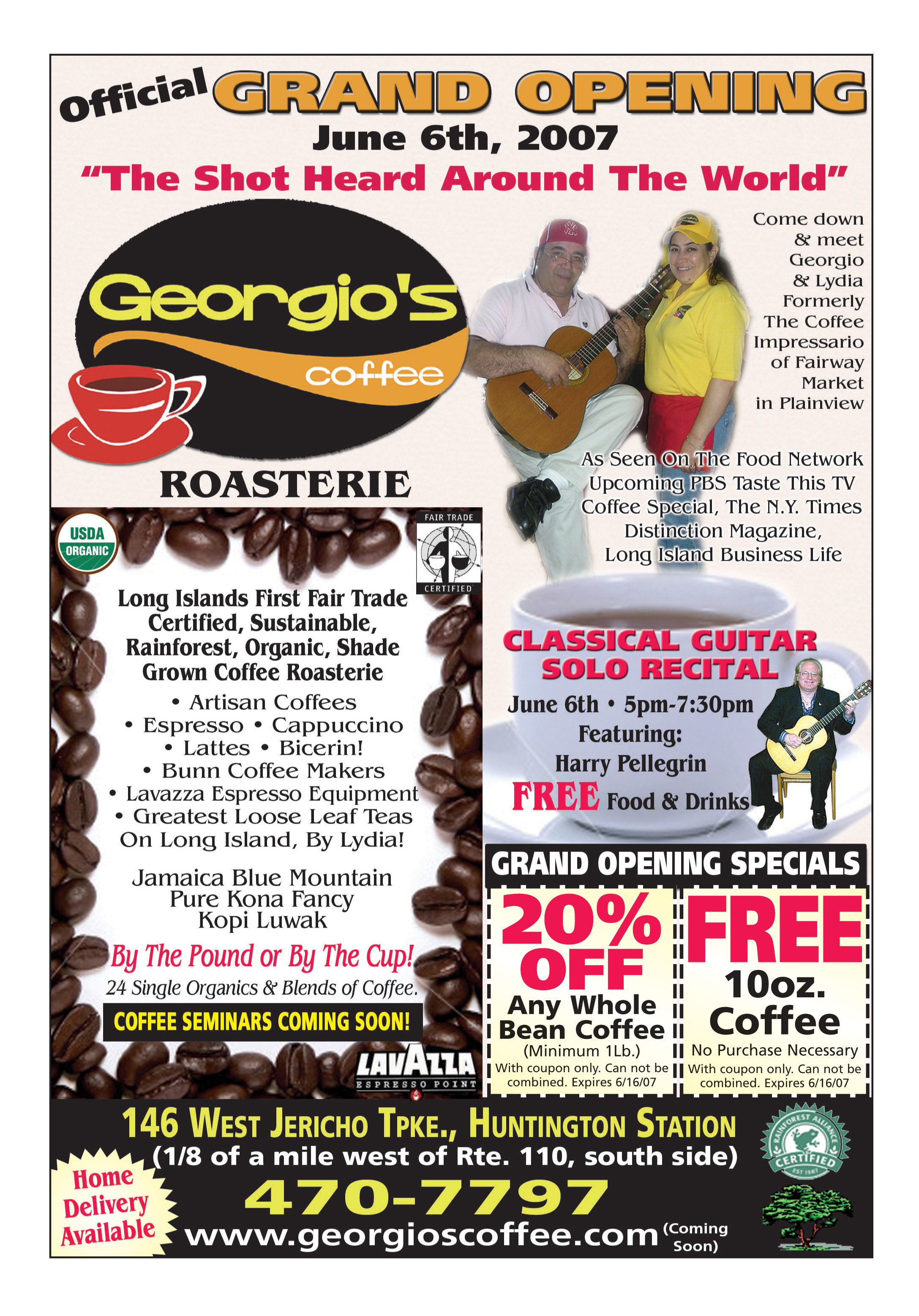
Thanks to all you wonderful people for coming out to the Troy Savings Bank Music Hall. Thanks from all of us to the Troy Savings Bank Music Hall Foundation and Time Warner Cable for sponsoring this concert series and my recital!
May I suggest a wonderful retailer??? Click on the logo for deep discount guitar strings and worthy accessories!
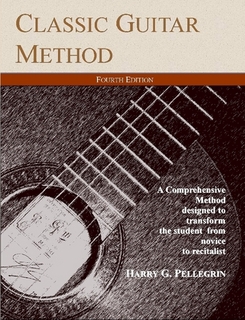 Check out my new guitar method.
Check out my new guitar method.
This is the book you need!
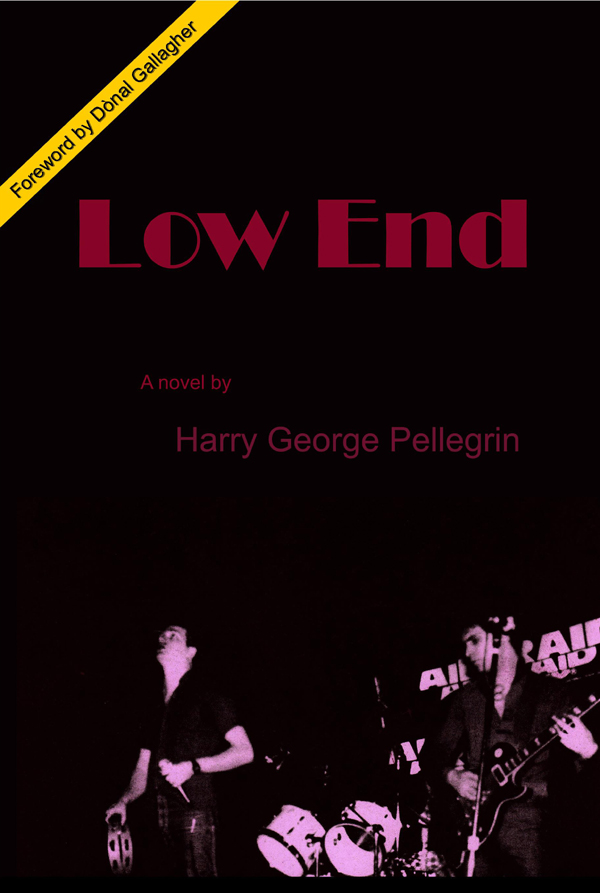
The NEW REVISED SECOND EDITION of Low End is now available for purchase. This new edition includes scenes and colloquialisms removed from the first edition. This baby reads like Da Bronx, man! So even if you've read the book before, you haven't read it this way. New, lower price as well. Get LOW END on www.lulu.com now....
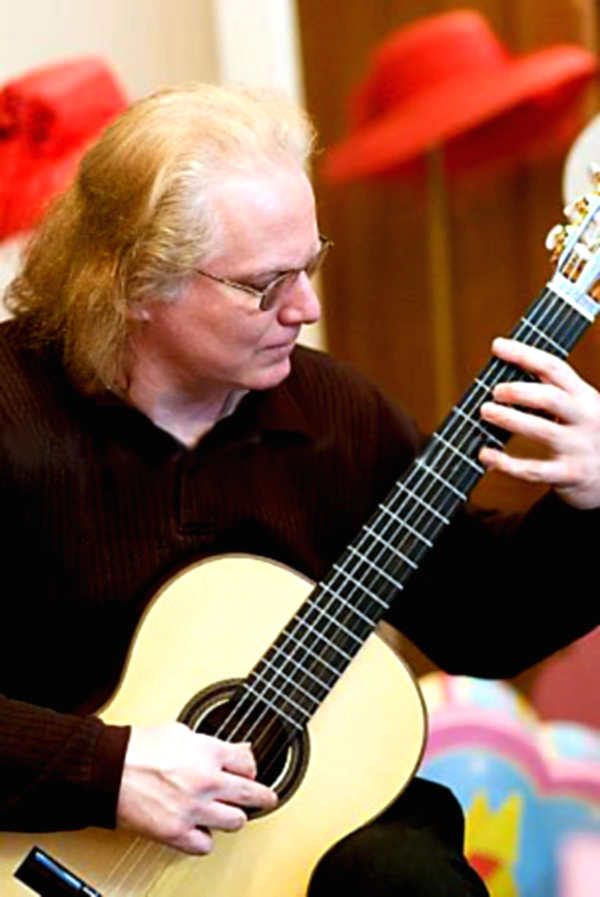 Saratoga
Springs' ULTIMATE event, the Pink Party which celebrates the
birthday of the beautiful and very charming Margie Rotchford -- and benefits
the YMCA, was a terrific evening hosted by Natalie of Saratoga Trunk back in
April. Harry wore none of those hats in the background... Well
maybe for a little while. Photo to left courtesy of
Heather Bohm-Tallman; photographer par
excellence. Please visit
her website. She is remarkable!
Saratoga
Springs' ULTIMATE event, the Pink Party which celebrates the
birthday of the beautiful and very charming Margie Rotchford -- and benefits
the YMCA, was a terrific evening hosted by Natalie of Saratoga Trunk back in
April. Harry wore none of those hats in the background... Well
maybe for a little while. Photo to left courtesy of
Heather Bohm-Tallman; photographer par
excellence. Please visit
her website. She is remarkable!
Playing at
Ernie Tetrault's Roast at the
Glen Sanders Mansion, March
15, 2007. What a great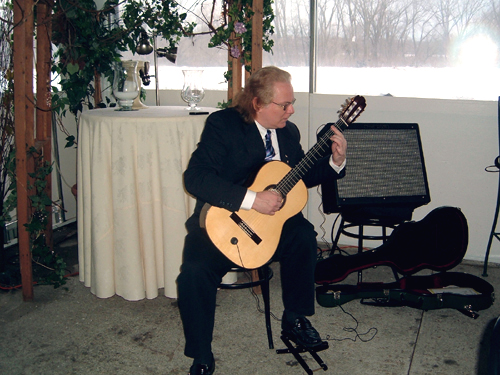 night. Thank you, Schenectady Channel 16! The Mohawk was just
about to flood at the Stockade. That white icy river in the background is
about ten feet over its banks.
night. Thank you, Schenectady Channel 16! The Mohawk was just
about to flood at the Stockade. That white icy river in the background is
about ten feet over its banks.
CLICK HERE to listen to an excerpt from the Schenectady Today Television broadcast of February 7, 2007. Ann Parillo hosts the Wednesday Edition and was kind enough to ask Harry to perform on this live broadcast. Be sure to watch the Schenectady Today Show on Time Warner Channel 16!

Get the recipe Harry Pellegrin prepared on the 'Schenectady Today' Program December 27, 2006! (Picture at left: Harry getting ready to play on the 12/27 show.)
And please visit Ann Parillo's Schenectady Today Program Website!
The recipe from August is still up and available for your dining pleasure!
The Store A neat collection of guitar-related items.
FREE GUITAR TECHNIQUE SESSIONS AND STRENGTH/DEXTERITY EXERCISES!!!
AVAILABLE NOW !
The Classic Guitar Method: Now in one volume, much of what the novice classical guitarist will need to know to lead him or her to the recital stage. From proper instrument care and maintenance to the necessary technical skills, musical mind-set, and the standard repertoire—all exposed and explored with enough detail and insight that the student will wish to keep this book handy years to come as a ready reference source.

With the aid of a good teacher, the student will rapidly progress through The Classic Guitar Method attaining technical proficiency and musical eloquence.
This method stems from the need to incorporate a number of schools into a single cohesive curriculum. Years of honing a logical approach to the guitar and the creation of music culminate in this volume. As a self-proclaimed Disciple of Valdés-Blain , much of that famed teacher's focus can be found in Mr. Pellegrin's method.
Why do we need another CLASSICAL GUITAR METHOD?
During the course of teaching guitar over the past twenty six years, I have often noted that no single method book contains all the information I wish my students to have readily available to them on a continuous basis. It has not been uncommon for me to assign as many as three methods to a new student—all good, by the way, but not one of them being all inclusive. This is not an unusual circumstance, and one I should have anticipated in my teaching experience as I distinctly remember Albert Valdés-Blain (10 April 1921—30 January 2002) assigning me a mind-numbing ten books at my first lesson, seven of them methods or collections of studies.
I consider myself a disciple of Valdés-Blain. I met him in 1974, though, of course, I had heard of him by reputation. An excellent musician and teacher, Lawrence Silvestro—who had brought me along to that point at which I was ready to undertake a study of the classical guitar at the college level—had admonished me when he'd heard with whom I would be studying. With much the same advice as Mary had given the servants at the marriage feast at Cana , Mr. Silvestro told me "Whatever he tells you to do, just do it!" So I did.
When I decided that the time was right for me to create a new method—one that would include all the necessary technical and musical disciplines to lead the serious student from neophyte hobbyist to burgeoning recitalist—I resisted the urge to call the Method something like ‘Maestro Valdés-Blain's School of Guitar' as this would imply that my method would accurately reflect his system of instruction and musical nurturing. While I do follow his precepts fairly consistently and faithfully, my method reflects his impartation to me and me alone. I did not intimately observe his method with other students but what I did witness leads me to presume that he tailored his approach to each individual, within logical constraints, no doubt. No less importantly, I had also modified my teaching methods to my own personality and style of instruction over the years. In short, this method echoes the classical approach of a well-known and much-loved pedagogue and student of Segovia , but is filtered through and expanded by a respectful devotee.
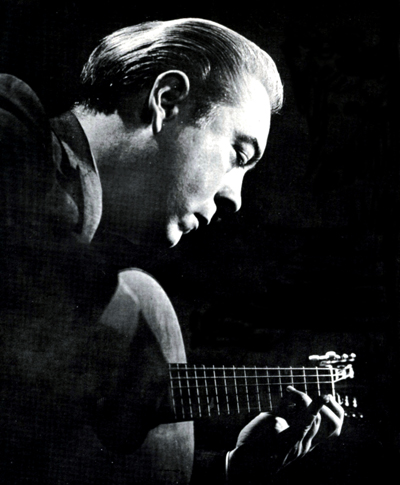 Is my method all-inclusive? In light of what I wrote previously, possibly not. It should be very close though! No method will be absolutely all-encompassing for every student. A good instructor will direct the student to studies and pieces that focus in on the student's particular weak areas. Aside from this, there is the legal ramification that any composition penned in the Twentieth Century is, of course, protected by copyright and while I can not include any such item here for this reason, I do direct the student to exemplary editions of milestone modern music. All the performance pieces and many of the studies are public domain. In the case of studies by Fernando Sor, Ferdinando Carulli, Mauro Giuliani, Napoleon Coste and the other classic masters, I have included my editions of some of their works. I then direct the student to complete editions from which these gems are drawn. The student can then choose to acquire these for further study.
[Photo to left: Albert Valdés-Blain circa 1965.]
Is my method all-inclusive? In light of what I wrote previously, possibly not. It should be very close though! No method will be absolutely all-encompassing for every student. A good instructor will direct the student to studies and pieces that focus in on the student's particular weak areas. Aside from this, there is the legal ramification that any composition penned in the Twentieth Century is, of course, protected by copyright and while I can not include any such item here for this reason, I do direct the student to exemplary editions of milestone modern music. All the performance pieces and many of the studies are public domain. In the case of studies by Fernando Sor, Ferdinando Carulli, Mauro Giuliani, Napoleon Coste and the other classic masters, I have included my editions of some of their works. I then direct the student to complete editions from which these gems are drawn. The student can then choose to acquire these for further study.
[Photo to left: Albert Valdés-Blain circa 1965.]
What my method does is expose the student to the technical disciplines required to effectively perform on the instrument and give enough basic recital repertoire that when the method is completed, the guitarist will be able to perform a recital of approximately forty-five minutes in length. I have included many tips and explanations that should shed light on the correct process of attempting to solve problems. Teach a student a solution and he has one problem solved. Teach a student to be a problem-solver and he or she is on the road to proficiency with the instrument.
Included in this book are sections on the correct interpretation of lute tablature in its varieties. Why? The lute enjoys one of the largest repertoires of any instrument ancient or modern. Much of this lute music remains untranscribed for the guitar, its modern descendant. The guitarist will want to mine this wealth of material for fresh program pieces.
Many students have asked me to recount the development of the guitar as the instrument we know today. So few people know exactly what a classical guitar even is: “Children's guitars have nylon strings while real guitars have steel strings.” Little do those who make this ridiculously false statement realize that some of the priciest, most desired instruments on the planet are nylon-strung classical guitars, so this book includes a section on history as well as instrument care.
Music is hard work. Mastering an instrument is an endeavor that requires more years than a lifetime can possibly ever contain. With that said, many will then ask ‘why bother?' It's a fair question and if you ask it, maybe playing an instrument is more a hobby for you and less a vocation. For those who begin their journey by considering it a vocation, it becomes an obsession; a passionate one that can never be fully satisfied. If you are fervent about playing the classical guitar—and playing it well—then this book, my method, may be the one book you need to make it all happen. Practice is crucial, critical listening is, well, critical. An awareness of musicality is more than vital—music is what it is all about and unless the
 performer can impart an emotion to humanity-at-large, then why bother?
performer can impart an emotion to humanity-at-large, then why bother?
Indeed, it can be stated that music is the most spiritual of all the arts. It is more fleeting than sand painting as once the sound has been produced, it is over and gone except for the image it leaves on the human heart. Recordings are wonderful, but they can never hope to capture the intrinsic veracity of a genuine, intimate live performance. The guitar is arguably the most intimate of all instruments; you must hug it to make music with it! Its relatively small voice requires the listener to draw close to the performer. This double dose of intimacy makes the guitar an incredibly personal and articulate voice for an artist. [Photo to right: Harry Pellegrin Nov. 1980.]
I wish you great success with music. Music will feed your soul in a way that nothing else can. I wish you equal success with the guitar. Attaining mastery of an instrument is a long road—a road with many rewards and more than its fair share of frustration. A good tutorial method will help you avoid some frustrations and work through others. There are poor paths and rough roads to be found. This method of mine, should you decide to let it, will put you on the right road, but this road doesn't end when you close the book. Should you decide to turn the page, I welcome you to the road you will travel for the rest of your life!
ISBN: 978-1-4116-9442-2
Published by PAB Entertainment Group, P.O. Box 2369 Scotia, New York 12302
Please go to www.lulu.com to order.
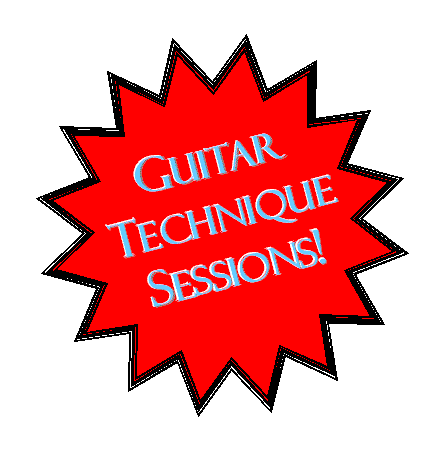
Harry George Pellegrin's first keyboard album Reflecting Pools can be auditioned here. Visit this page link to hear samples...
The second album, In That Zone, has a page where one can hear samples as well. Follow this link...
Spa Anthology -- need relaxation music for your Day Spa or Facial and Massage Facility? Click here for hassle-free music.
If you are looking for some unique gifts, please consider either a copy of LOW END or one of Harry's fine CD's of inspirational and relaxing music.
LOW END is available through www.amazon.com and Reflecting Pools and In That Zone can be purchased through www.bathtubmusic.com. Thanks!
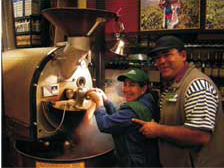

This is Georgio and his wife Lydia. Georgio is a master coffee roaster and can always be found custom-roasting green beans at Georgio's Coffee Roasterie, located at 146 West Jericho Turnpike in Huntington Station, NY. That's the Island, baby!
Guitar: Paulino Bernabe. Favorite Composer: Agustin Barrios Mangore.
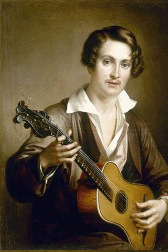 klassiskgitar.net : On this site You will find many free scores for beginner/student/amateur. The images and artwork on this site are quite beautiful and very worth checking out!
klassiskgitar.net : On this site You will find many free scores for beginner/student/amateur. The images and artwork on this site are quite beautiful and very worth checking out!
Helen is the kind of girl you dream about. She's smart and confident, funny and affectionate, and is killer good-looking. Gary has fallen for her hard. Even so, he is distracted by life's minor happenstances. It's those little things like, oh, crooked cops, shady club owners, illegal smuggling, and a few dead bodies.
Still, Gary can't keep his eyes off Helen.
Harry Pellegrin's mystery novel DEEP END is packed with eerily real and sinister characters, music, interesting locales, bizarre spiritualism and a plethora of corpses. Couple this with an exceedingly clever plot and we have this year's best beach-read.
And there's Helen!
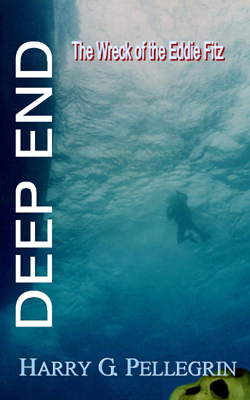 Read all about her in DEEP END: The Wreck of the Eddie Fitz
Read all about her in DEEP END: The Wreck of the Eddie Fitz
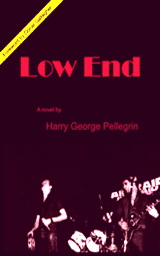
Buy Low End through PAB Entertainment Group on AMAZON.com. (Go to the USED AND NEW section) Not only will you get the book, but you'll also receive a FREE COPY of Reflecting Pools, Harry's first keyboard album. You will enjoy!
FREE GUITAR TECHNIQUE SESSIONS AND STRENGTH/DEXTERITY EXERCISES!!!
Do you know how to chain your effects pedals? Do you sound like a 'Wall of Oatmeal' sometimes? ALL the time? Check this out!

Can't read standard musical notation? If you can read the gas prices to the left, sure you can! Please see these articles for the help you need:
Exercise/Technique Session Number Forty: July 14, 2005 Standard Notation -- so simple even musicians can read it!
Exercise/Technique Session Number Forty Four: August 11, 2005 Back to Basics PART ONE -- teaching the new student to read above the fifth fret.
Exercise/Technique Session Forty Five: August 18, 2005 Back to Basics PART TWO -- teaching the new student to read above the fifth fret.
Exercise/Technique Session Forty Six: August 25, 2005 Back to Basics PART THREE -- teaching the new student to read above the fifth fret.
Exercise/Technique Session Forty Seven: September 1, 2005 Back to Basics PART FOUR -- teaching the new student to read above the fifth fret.
Exercise/Technique Session Forty Eight: September 8, 2005 Back to Basics PART FIVE -- teaching the new student to read above the fifth fret.
Exercise/Technique Session Forty Nine: September 15, 2005 Back to Basics PART SIX (The last in this series, but not on this topic! Teaches the new student to read above the fifth fret. Next week a new topic. YEAH!
Misquamicut Beach Rhode Island -- a quiet little hideaway by the Sea!
BIG FOOT SPOTTED IN RHODE ISLAND!!!
Pellegrin writes the tale of Gary Bruno's 900cc Thruxton Triumph--READ IT HERE! www.motosavvy.com
Photo and banner courtesy of www.motosavvy.com copyright 2005
THE SECOND ALBUM.... Harry Pellegrin's Reflecting Pools is an ethereal journey into the realm of relaxation. In That Zone is a more classically structured exploration of mood and personality. From the baroque flavor of A Little Song for Amanda to the Bartok-tinged Dream of the Night Dance , a wide range of styles and instrumentation transport the listener...
What you'll find on this page -- links to Harry Pellegrin's pages on classical and electric guitar technique, rock bands of the past, AIR RAID included. Rory Gallagher, master of the blues, one of Ireland's favorite sons. Harry has a small tribute here as he was a great fan of crime novels and his brother Donal graced the book LOW END with a wonderful foreword. There is a tribute to Harry Pellegrin's mentor Albert Valdes-Blain and his teacher and mentor Andres Segovia. What does that make Harry? Second generation Segovia?
"You'll see pages on Fender's wonderful and innovative guitars. But you'll also find information on my novels and music. Look, I hate to be self-promoting, but I think you'll find my stuff to be worthy of your attention. Please check it all out." -- Harry Pellegrin
No Excuses required for Leftover Turkey Recipe!
AND BY POPULAR DEMAND -- HARRY'S FAMOUS CHILI RECIPE and JUST ADDED -- the cornbread to go with it!
NEW! The History of the Classic Guitar from Lute to the 21st Century (New article on Vicente Arias has been added)
AND
Some Arcane Tips for the Guitarist who wants to Play the Lute
Harry Pellegrin's Much-Visited Guitar Page Feature!

Harry Pellegrin's choice for a gigging classical guitar: The Kenny Hill Munich -- an affordable recital-quality instrument. Hey, it's a very nice guitar for any amount of money!
More... The Bronx was the place to live in the thirties, forties and most of the fifties. It suffered from its own success. Hey, Harry Pellegrin grew up there. Everyone wanted to live in the urban paradise and the strain on the infrastructure proved too great. Changing social values may have contributed to the downfall of the Bronx as I knew it during the sixties and seventies. People who had lived all their lives in the Bronx decided that the place was too crowded or too 'working class' and moved to Westchester or across the river to Nyack, Nanuet, New City and points north. Many people blame the decline of the Bronx in the eighties to one ethnic group or another. I don't believe this is an accurate assessment. It was the vacuum of people that drew in an economically poorer stratum of society. Landlords panicked and formerly well-rooted families pulled up their stakes and fled. The City's financial crises of the seventies left little solvency to either maintain or expand development or even merely patch up the roads. More... Rory Gallagher, Legendary Blues Guitarist In those days, progressive rock was popular. Guitarists had large stacks of amps, tons of outboard gear and numerous instruments on stage. Who could afford all this hardware to make music? Why was it necessary? This frustrated Harry to the point that he had decided to stop playing guitar and concentrate on the bass. Then he heard Rory. There on stage was one man with a battered Stratocaster and one small combo amp. With this limited arsenal, Rory Gallagher made more honest, meticulously crafted music than anyone Harry had seen before. Not only did Harry decide to stick with the guitar, he found the genre known as the Blues and began a love affair with the Stratocaster that continues to this day. Rory Gallagher toured almost continuously until shortly before his death on June 14, 1995. In Europe, the anniversary of his passing is commemorated with tribute festivals and other events. Rory has never found the recognition he deserved in the United States. His popularity in Europe was huge—and it continues to grow! Loyal American fans are continuously spreading the good word as well, we will see Rory get the fame he so justly deserved! More... Fender Guitars, the Telecaster and the Stratocaster -- How they're built , How they play! Untermyer Park , Yonkers New York Located in North-west Yonkers, is a beautiful site, full of interesting architecture and expansive flower beds. It was once the site of a private estate owned by the Untermyer family. The original mansion has become part of St. John's Riverside Hospital. The grounds of the mansion are now included in the park. The park affords a spectacular view of the Jersey Palisades. Popular local legend has it that various sites on the property were used in occult rituals. Regardless, the locale is quite spooky on a moonlit night. The park closes at dusk, so you'll have to take my word for that! As teenagers, we'd often drive up from the Bronx to hang out, play hide and seek and do other things that teenagers do when relieved of parental observation. More...
Woodlawn Cemetery , Bronx New York NOW WITH MORE PICTURES!!! (7/7/05) About fifty yards from the Pellegrin grave , lies the earthly remains of one of American music's brightest lights-- WC Handy , the father of the blues. His stone is basically a grave marker, carved with a musical staff, a trumpet and a simple name and dates. As I took a photo of this great man's grave, something shiny caught my eye in the grass. If you look at the photo, you will see a horn mouthpiece. This was the shiny thing I saw. I do not know whether it was a remembrance from a fellow musician, or a token placed by a grieving loved-one. More...
Big Hill Shelter , Harriman State Park
Famed Performer and Instructor of the Classical Guitar -- Albert Valdés-Blain I met Albert Blain in 1974. I had heard of him by reputation, of course. The guitar teacher who had brought me along to that point at which I was ready to undertake a study of the classical guitar at the college level, well, he had admonished me when he'd heard with whom I would be studying. With much the same advise as Mary had given the servants at the marriage feast at Cana, he'd told me "Whatever he tells you to do, just do it!" Born in Havana Cuba in 1921, Albert Blain was still a New Yorker--he'd lived in the City since 1923, the year his parents brought him and brother Roland to the United States. His father had chosen the guitar for Albert and Roland. The two would become a duo performance act, recording extensively in the 1940's and 1950's. Albert Blain studied with Andrés Segovia, the performer and educator who is truly the father of the Classical Guitar revival of the 20th century. After retiring from the world's concert stage, Blain opened a guitar studio on 13th Street in Manhattan. More... plus a tribute to Andrés Segovia Andrés Segovia (1893-1987) is the father of the twentieth century's classical guitar renaissance. Indeed, his efforts can to still be felt in the seventeen years (as of this writing) since his death. Without his untiring work to promote the instrument through his ambassadorship of the guitar, it would still be considered a folk instrument. Segovia's career got its start when his uncle introduced the four year old Andres to the guitar through folk songs sung to a strummed ‘air guitar.' The boy showed a deep interest and was transported forthwith to the local luthier. Young Segovia's family attempted to dissuade him from throwing his life away on a humble instrument. They told him ‘it wasn't respectable.' This hardened his resolve to both master the instrument on his part as well as to legitimize it to the music world and the world at large. He dreamed of a day when the guitar would share the concert and recital stage on an equal footing with the piano and the violin. This vision drove him on. His plan was threefold—to present the guitar to the concert-going public as a serious virtuoso's instrument, to establish a pedagogical system for the instruction of the instrument on the university level and to build a repertoire for the classical guitar through his own careful and stylish transcriptions of Bach, Scarlatti and others as well as to persuade prominent modern composers to craft new music for the instrument. This was his lifelong path. He followed it through to the end; no one can argue that he didn't succeed far above and beyond. More...
AIR RAID Bar Band of the 1980's Bronx Bar Band Telepathe Reunites under the guise of AIR RAIDHarry Pellegrin and John Podesta try to reassemble AIR RAID, one of Harry's old bands... Way back in 1975, there was a band in the North Bronx. Yeah, there were quite a few bands in that part of the world, come to think of it, but this one was a curious blend of former Mount and former Cardinal Spellman students. (With a smattering of Fordham University folk.) The lion shall lay down with the lamb... Music can solve the world's problems. Read more about their thirtieth reunion -- More...
AIR RAID was formed by Martin Seddon in the early Fall of 1980. Martin, aka Captain Marty, was born in England and moved to the USA (well, if you call Mt. Vernon, NY the USA.) when he was fourteen years of age. Naw, Mount Vernon is a nice little city that was home to the Left Bank, a great new wave/rock club in the late seventies and early eighties. Anyway, Marty is a graduate of Parsons School of Design, and being a graphic artist and fronting a rock and roll band are the only two things that have ever meant anything to him. Harry met Marty through the bulletin board at PragmaTech Sound. More... The Discords , Five Part Bronx Harmonies of the 1960's Some of Harry Pellegrin's past articles including: The Hitler Youth in Ohio Speedy Atkins Daytona Bike Week 1993 In 1968 I had begun attending Mount Saint Michael Academy, also known by its students as “The Concentration Camp on the Hill.” This was an all-boy's junior and senior high school well known for its sports programs. The Mount was also considered academically superior to the many of parochial schools and definitely on a higher level of excellence than the public high schools in the area. My parents had always been lenient with me when it came to self-expression. If I wanted to wear green bell bottoms and grow my hair long -- even if they didn't approve of the style – they would allow me to go that route and even defend my right to be strange! By 1967 my hair was a good bit longer than was socially acceptable and definitely way past the Mount's nothing-on-the-collar code. I soon realized I really couldn't fight this; I could be going to public school after all. My father went to bat for me every time the Dean of Discipline would send a letter home in an attempt to have me dress more conservatively. The Mount had a tie and sport jacket policy. They didn't indicate either sizing or color -- facts I was well known to exploit. Needless to say, I had most of my fellow students -- the jocks -- wanting to beat me up because I was different. To give a glimpse into what six years at the Mount did for me, let me tell you about my response to my ‘recent graduate' survey. When asked ‘What is the most important thing Mount St. Michael's taught you?” I responded “Never trust a man who wears a dress.” More... Your humble scribe, his books, his music
|
What's New? The New Album!
Hey, the new album is out! That's right, finally a follow-up to the reissue of my old album from the late 1980's.
Reflecting Pools is a departure for me as it is totally keyboard. Well, the guitar did show up on one track...
Click the image to the left to learn more, hear a few tracks --even get ordering info if you want it!
"...Reflecting Pools is a notable first album [for Mr. Pellegrin]. A dramatic sense of tonality and mood are propelled by exemplary musicianship and exciting compositional exploits."
Available through www.BATHTUBMUSIC.com...
...And containing nine tracks that are relaxing, inspirational -- sounds like a snooze. Not really, this is great stuff to listen to on a rainy afternoon, while with your significant other (nudge, nudge, know what I mean?) Please visit the Reflecting Pools page on this site or www.bathtubmusic.com. In That Zone, is now out! Please visit www.bathtubmusic.com for details and to order.
LOW END
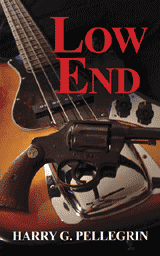 What's new with the book that came out over a year ago? After being on back-order at Amazon.com for what seemed like a century, it is my understanding that copies are once again shipping. Barnes and Noble's website is on-again-off-again, but PAB (on Amazon as an authorized vendor) has LOW END in stock and it comes with a CD! What's new with the book that came out over a year ago? After being on back-order at Amazon.com for what seemed like a century, it is my understanding that copies are once again shipping. Barnes and Noble's website is on-again-off-again, but PAB (on Amazon as an authorized vendor) has LOW END in stock and it comes with a CD!
DEEP END, the exciting sequel, is being shopped by my literary agent even as we speak. |
The Guitar Sessions: Weekly tech tips and exercises to help the guitarist improve. This feature has really taken off. Each week a new page is posted with either an exercise to get the left and right hands moving more efficiently and effectively or an interesting piece from the standard repertoire , demonstrating a necessary technical ability. Judging by the hits these pages receive, you guitar players love this feature! efficiently and effectively or an interesting piece from the standard repertoire , demonstrating a necessary technical ability. Judging by the hits these pages receive, you guitar players love this feature!
The page is updated every Thursday. Visit the 2004 Archive as well! |
|
In my opinion, the murder mystery genre reached its zenith in the 1930's and 1940's. The novels penned in those decades were taut, no-nonsense stories of people in life and death crises, people who did not flinch when confronted with overwhelming odds or overwhelming emotion. Some of these tales could be hard-edged and hard-boiled, but the heroes invariably had a soft side as well. I believe that over the years, in an attempt to mimic real life, the writers of murder mysteries--and most other literature, for that matter--have lowered the standards of excellence set by such authors as the gritty Raymond Chandler and the sophisticated Dorothy Sayers. Many authors misinterpret smut for romance and brutality for strength. My novels aspire to the standards set by the 1940's mystery writers. My tales are as real and grimy as the mean streets that spawned them. Even so, and though they deal with modern issues, you will not find gratuitous sex in my characters' relationships. Sex may be alluded to, but it is never allowed out from behind closed doors. You will find that my books are entertaining to a broad audience--I have had positive comments from teens to grandmothers. One reader was surprised when I told him that there were no obscenities in the book he'd just finished. He hadn't missed them! A good story doesn't need such unnecessary 'embellishment.' I have conducted book signings at churches, country clubs, libraries and even a street corner (don't ask!) and I've never been called to task for, or ashamed of, my work. Pick up a copy of my latest novel and see if it isn't a good read! Harry Pellegrin
|
This site is a way for me to commemorate and celebrate a life and lifestyle that is now extinct. Why extinct? Is it that Thomas Wolfe " You-can't-go-home-again " thing? Is it because life is so much different now that what we experienced in the Bronx in the 60's and 70's is no longer relevant? Yes. No. Yes and no? Definitely maybe ! Why do I always start these little essays with questions? At first, the main thrust of this site was to promote my book. It is a worthy goal; the book tells a good tale and everyone who has read it finds it entertaining and thought-provoking. With that sole goal, I went live with this site back in August of 2003. What happened next is what makes this site truly valuable. There are people I grew up with, attended school and with whom I played in bands -- neighbors, friends, good family -- who I hadn't seen since I moved from the Bronx in 1986. Divorce had forced me into exile, time and distance conspired to seemingly turn this into a life sentence. Thank the muses for the internet! This site wasn't live for more than two months before I was reunited with Paul Silvestro , a childhood friend whom I hadn't seen in seventeen years. His brother Larry , the guy who had turned me on to playing guitar and taught me the things about music that matter the most, now with him I had no contact since 1983. Twenty years! Too long. I felt as if a part of my soul had been restored -- a part that had been missing for ages and had long ago been written off. But more was to come. Anthony Pernice, Art Clement , Mike Moretti -- all reunited to me. The 1960's weren't good to a number of us -- many of us had our personal demons to exorcise, be it substance abuse or the insidious hedonism of the times. but through it all, we were instilled with a vibe, cast in an artistic mold--call it what you will--but unless these same environmental stimuli are exactly reproduced, there will never be another crop of people quite the same. This page delves into what we experienced and how we incorporated these experiences into art, music, literature and life . I've paid tribute to my neighborhood, the Wakefield section of the Bronx. The Discords -- Larry Silvestro and Artie Clemente's first band in the early mid-sixties-- they're here with their matching outfits, Fender, Hagstrom and Gretsch guitars plus those impeccably precise five part harmonies. And speaking of the Bronx, I can't talk about Wakefield without mentioning Mount Saint Michael Academy on Murdock Avenue. The Mount was my Junior and High School and although I was not a happy camper while there, I made a few really good friends and consider the education received to be a fine one. Of course, there is an homage to Leo Fender and his magnificent designs, the Telecaster © and the Stratocaster ©. I officially declare C.L. Fender an honorary Bronxite. These instruments have literally changed my life and the way we all hear music. Check out this page on my site. Rory Gallagher, whom I saw play in 1973 and who has influenced me ever since--he has a page here as well. He has gone on now, but the impact he made is still rippling outwards, changing how we interpret the blues. Untermyer Park in Yonkers and Woodlawn Cemetery in the Bronx are included on this site. We were kids interested in a good ghost story and both these places were terrific for providing a few innocent and fun goose bumps. ...and of course, my book! Please enjoy this site. Nose around. Anyone can find something here to read and get a chuckle. Thanks! |
|
©2005-2010 Pound Sterling Graphics


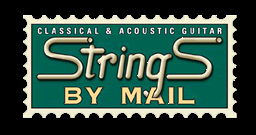

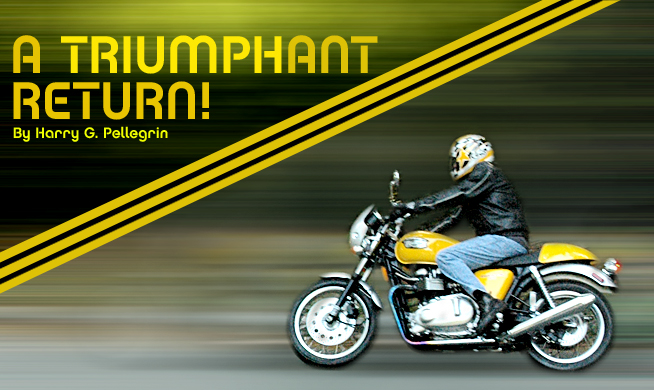
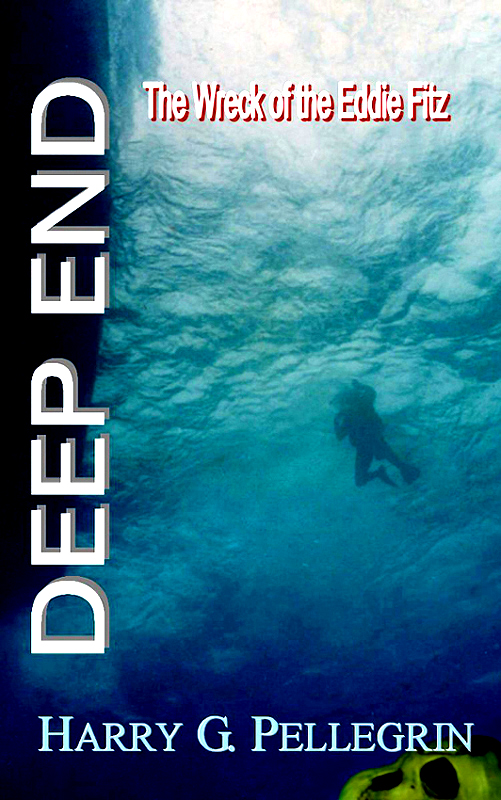 The Musician's Mystery Series --
The Musician's Mystery Series -- 